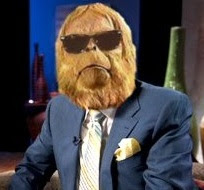Cinema Before Film

"Film History Began
With The Magic Lantern"
The magic-lantern -- the first projector -- was invented in the 1650s, and soon became a showman's instrument. By the end of the 17th century, wandering lanternists were putting on small-scale shows in inns and castles, using a lantern lit with a feeble candle. Often these shows featured goblins and devils -- hence the name the "magic lantern."
By it's heyday at the end of the Victorian period, magic-lanterns were everywhere -- in homes, in churches, in fraternal lodges, in schools, in large-scale halls and theaters, and as a regular part of home and public entertainment. At that time there were probably between 30,000-60,000 lantern showmen in America, giving between 75,000 and 150,000 shows a year.
In France in the late 18th century, they held what was called pre-cinematic projection ghost shows, which gained popularity through most of Europe (especially England) throughout the 19th century.
A modified type of magic lantern (projector) was used to project images onto walls, smoke, or semi-transparent screens, frequently using rear projection. The projector was mobile, allowing the projected image to move on the screen, and multiple projecting devices allowed for quick switching of different images. Frightening images such as skeletons, demons, and ghosts were projected.
Lanterns of FeaR
The true origins of screen horror
Components of a magic lantern from the last turn of the century but one:
a. objective or projection lens
b. focus knob (moves the lenses to focus the image by a rack and pinion system)
c. filter slot (e.g. for a colored glass filter)
d. flap (to soften the light)
e. condenser housing with condenser lenses (to condense the light in an efficient way onto the slide)
f. chimney or cowl (to provide an updraft for oil burning illuminants and to carry off smoke and heat) g. Side-opening door (adjustments to the burner were made through here); mostly provided with an inspection window, fitted with dark tinted glass)
h. illuminant (burning oil, gas or electricity)
i. lamp house
j. hinged back
k. ventilation slots
l. slide stage that holds the wooden slide carrier.
Many magic lanterns use a parabolic mirror at the
back, to reflect the light of the burner, and sometimes
a heat-absorbing filter in front of the lamp. Several
lanterns are mounted on a baseboard, often with
adjustable legs on the front.
Phantasmagoria
is a shifting series of phantasms,
illusions, or deceptive appearances,
as in a dream or as created by the imagination.
Contrary to popular belief the true auteurs of screen horror were not 20th century film makers.
From at least the middle of the 17th century, priests and practitioners in the black arts were conjuring up ghosts and phantoms for fun and profit, with the aid of primitive projectors. In the 18th century other forms of natural magic were incorporated and the seance, with lantern-sorcery still at its heart, began to develop into a kind of art-form.
The foremost necromancer of the age was Johann Schropfer, a coffee-shop proprietor, based in Liepzig. Faced by poor business, he converted his billiard room into a seance chamber and, in the late 1760s, bombarded his unwitting audience with a myriad of ghostly sights and multi-sensory experiences, using projections on smoke, eerie music and sound effects, electric shocks, evil-smelling incense, drugs combined with sophisticated techniques of disorientation, auto-suggestion and sensory depravation. In time Schropfer attracted a cult following and took his show on the road to other parts of Europe. His accomplishments continued until 1774 , when he made a tragic error - he became haunted by his own imaginary demons, finally went mad and committed suicide.
By the 1780s books had begun to appear - the works of German and French men of science, such as Funk, Halle and Guyot - giving rational explanations for all of Schropfer's techniques. Although intended for serious scientific study, these primers soon became textbooks for stage magicians. Gradually a spectacular theatrical version of the Schropferesque seance began to evolve - a sort of 18th century, expositional entertainment. This was the Phantasmagoria show.
Paul Philidor presented the prototype phantasmagoria show in 1789, in Berlin. His show included all the paraphernalia of the original seance plus a few additional and spectacular concepts, such as the quaint notion of having the entire seance room burst into flames. Unfortunately, an unsympathetic audience wrecked the show. However, two years later he emerged in Vienna, with an improved show, and enjoyed a run of over a year. In 1793, he took the show to Paris, when the French Revolution was in full flood. Here he attracted large audiences with his popular re-incarnations of martyred heroes. Only when he somewhat unwisely set about satirising Robespierre did the show close.
In 1797, when things had quietened down somewhat, the Phantasmagoria was born again in Paris, under the direction of the Belgian showman Robertson - the Spielberg of the phantom-show. His most atmospheric venue was the crumbling Convent des Capucines , which the audience were obliged to approach via a Gothic cemetery. Robertson introduced new effects - masks, ventriloquism, the projection of three dimensional figures and live actors and scripted scenes. He eventually took the show to Russia and Spain,and soon the concept spread to the U.S.A. and other parts of the World.
Cabarets were rather bizarre places to begin with,
but the most unusual where the Ghost Show Cabarets such as:

Folies Bergére
The Moulin Rouge
Cabaret du Néant (Cabaret of Nothingness or Death)
Cabaret de l' Enfer (Cabaret of Hell)
Cabaret du Ciel (Cabaret of Heaven)





















